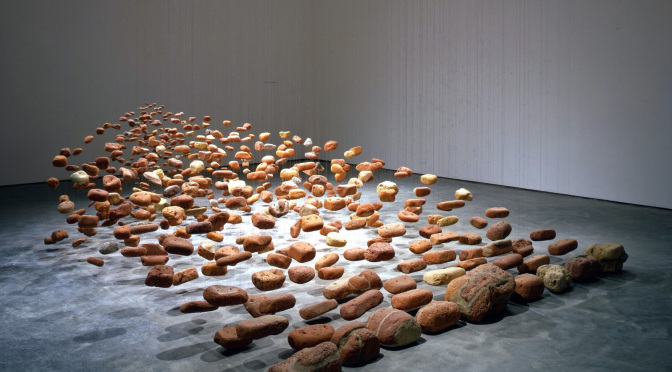Jane Bennett: Vibrant Matter
In this week’s post I wanted to reflect on the set reading of the week, Jane Bennett’s book “Vibrant Matter”. The reading made it apparent to me how important it is to consider our connection with the world of non-human things, and challenge traditional materialism. Though challenging at times, the reading introduced me to a range of compelling and thought-provoking ideas that really challenged my perspective on life and matter. It was clear to me that her work has the potential to contribute to a wider awareness of our interconnectedness with the environment. However, due to its philosophical nature, I was aware to approach her writing with caution and made sure to reflect on its strengths and weaknesses.
Understanding the vibrancy of matter
Bennett introduces the concept of the “vibrancy of matter,” suggesting that matter is far from being passive or lifeless but instead, it possesses a kind of liveliness and vitality. She asks the reader to recognize the force of inanimate objects and non-human entities and their potential to influence human activities. This reimagining of matter challenges our traditional, human-centric perspective and encourages us to consider the interconnectedness of all things. I would argue that this perspective is essential to wider environmental action, as though it is a relatively simple idea, it challenges the reader to understand the insignificance of humans, and ultimately the very little control we have over life outcomes.
Assemblages
One of the key concepts of Bennett’s theory is the “assemblage.” In the words of Bennett, “Assemblages are ad hoc groupings of diverse elements, of vibrant materials of all sorts.” (Bennett,2010:23) She believes that human, non-human entities, objects, and environments are all part of a dynamic network of relationships and connections. Understanding the assemblage helps the reader to comprehend the web of interactions that shape our world, and again reiterates the importance of seeing ourselves as part of our environment rather than in control of it.
Is vital materialism radical?
Vital materialism is considered radical because it challenges the anthropocentric view that humans are the centre of all existence. It challenges this very traditional and established hierarchy by suggesting that agency and vitality are not exclusive to humans. The approach acknowledges the shared vitality of all matter, emphasizing the fact that living organisms cannot and should not be separated, categorised, or ranked. By acknowledging the agency of non-human entities, vital materialism invites us to reconsider our ethical responsibilities towards the environment and non-human life forms.
Vital materialism as an ecological approach
I personally believe that advocating for a better understanding of agency and life through an approach like vital materialism could potentially shift society towards a more environmentally aware and considerate state. Though I do understand that some aspects of the concept may be slightly idealistic and over-simplified, for example, neglecting the realities of competition and natural selection, I would argue that vital materialism should not be seen as a radical approach. Instead, it should perhaps be seen as inspiring, encouraing humans to adopt a more responsible attitude and consider the impact of our actions on all aspects of the ecosystem, including non-human entities. I think the reason these ideas may seem so unrealistic and extreme to some purely comes down to a lack of understanding and awareness, which is a product of years of deeply ingrained societal perspectives of human to non-human hierarchies. However, I do appreciate that the term “radical” can be context-dependent, so the perceived radicalism of vital materialism may depend on the context in which it is discussed.
To conclude, Jane Bennett’s “Vibrant Matter” challenges our conventional understanding of our relationship with our environment. In my opinion, her ideas surrounding the vibrancy of matter, assemblages, and vital materialism provide a fresh and enlightening perspective on our relationship with the world around us. However, Bennet’s work is slightly controversial, while it presents a fresh perspective on materialism, it also raises questions and concerns surrounding realism and practicality. Nevertheless, in saying this, if we remember that materialism, like any philosophical framework, is simply a tool to enhance our understanding and provoke critical reflection, then I would argue that it could be very useful.
The reading was undoubtedly very challenging, both in terms of concept and vocabulary, which was one of the main concerns I personally had about her work. I do believe her ideas provide a good foundation for a widespread change in mindset, however, her ideas have relatively little value if they can’t be fully communicated to those who are less academically inclined.
Designer of the week…
“Design should be part of life and not separate from it” (Mau, 2021)
References-
Bennett, J. (2010). The Agency of Assemblages, Duke University Press eBooks. Available at: https://doi.org/10.1215/9780822391623-002.
Dezeen (2022). Design should “be part of life and not separate from it” says Bruce Mau. Available at: https://www.youtube.com/watch?v=JSMwI-zOF3k&t=115s (Accessed 5 November 2023)





